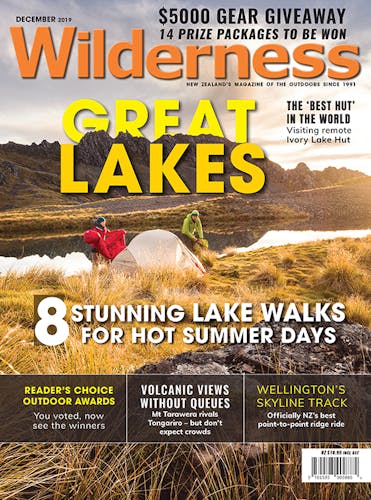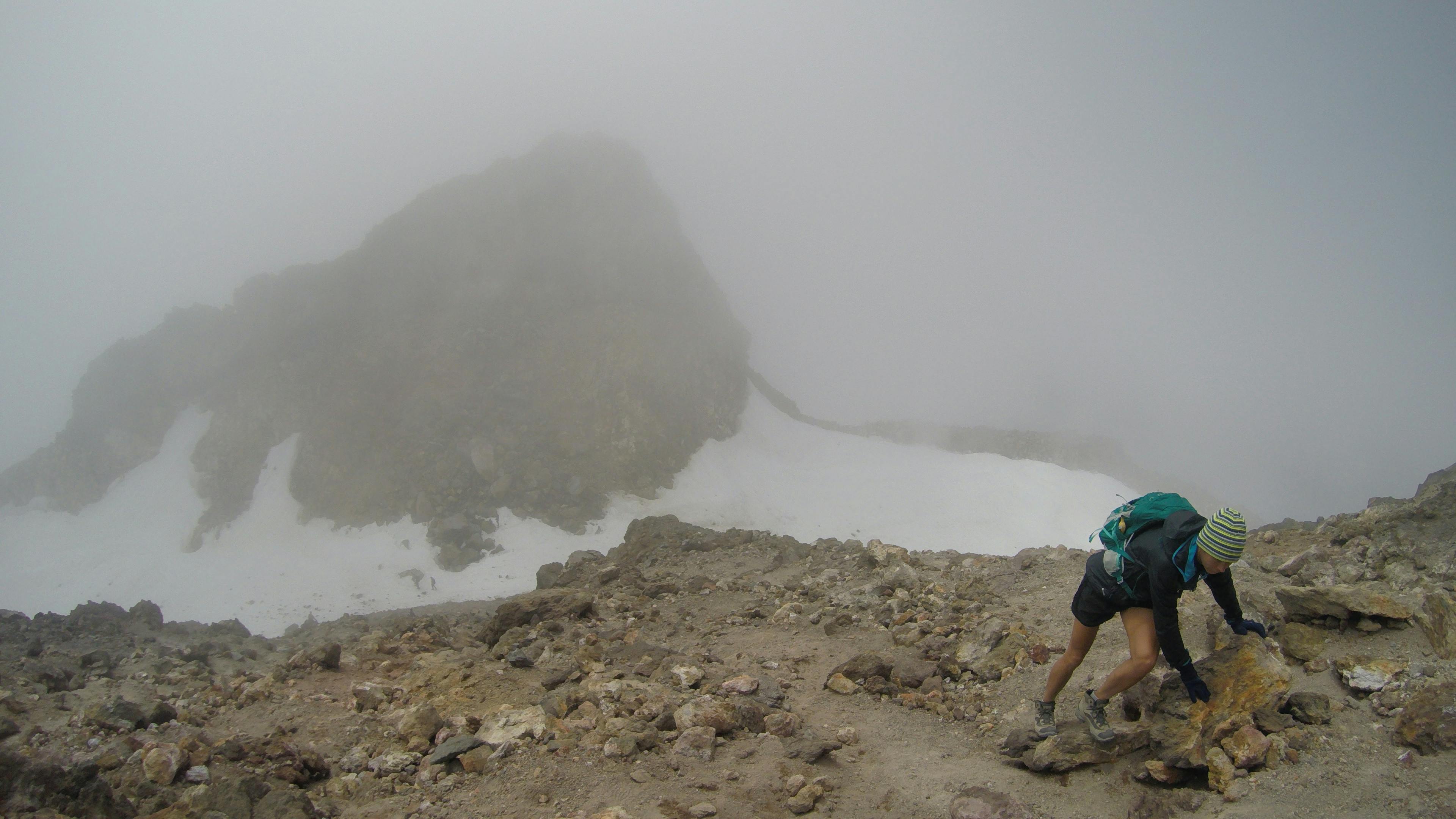Even if the forecast is good, conditions can change quickly. That’s why if you plan to tramp on the tops at any time of year you need to know how to navigate in whiteout or grey-out conditions.
I have known a clear blue sky to turn to thick mist in 15 minutes. The view of the valleys disappeared and it was difficult to see more than 20m ahead. In snow, the cloud merges with the snow, creating whiteout where everything looks the same and even your perception of up and down can be distorted. Here’s how to cope if you find yourself in these conditions.
You’re in a whiteout, what now?
It can be scary to be caught in low-visibility conditions, but because you will have studied your route and map before beginning the trip (you will have, right?) there’s no need to panic.
- Check your map and identify any potential hazards up ahead.
- If necessary put your pre-arranged Plan B into effect and get off the tops pronto.
- If it is safe to do so and you are sticking to your original plan, you can follow a bearing through the whiteout by using the leap-frogging technique.
- Ensure everyone in the party keeps sight of their companions. Rope together if you can.
Don’t get blindsided
Before you leave, know the weather forecast, be prepared for the expected conditions and plan for unexpected changes to the weather. Have a plan B in mind if the weather changes. Look at the map beforehand and identify exposed sections and points at which you should turn back, go on or take another route if the weather turns bad. Have emergency shelter with you and if in doubt stop where you are, take shelter and wait until it is safe to go on.
Locate potential hazards
When visibility is reduced, it is particularly important to be aware of your surroundings and plot your route. Know where you are at all times on your map and note changes in direction of the route. It is important to identify on your map hazards such as cliffs and scree slopes so you can do your best to avoid these. The contour lines on your map will give you a good understanding of the shape of the ground you’re travelling on – even though your visibility is restricted.
Keep your bearings
If you know where you are then you can follow a bearing (compass
direction) to stay on your planned route. This can be difficult in bad visibility, and to make matters worse, everybody has a bias, tending to err in one direction and terrain may also lead people away from the route.
To overcome this, the leap-frogging technique can be used. With this technique, one person guides a second person in front to ensure you remain on the bearing.
Stick together
Don’t lose sight of your companions! Be aware the conditions may affect your perception of distance. Pacing your steps and timing your travel are key tools in measuring distance.
Use your tools
In a whiteout on snow, you may not be able to see a cliff or cliff edge. Roll stones or snow in front of you to check which way the slope is going. If you are carrying a light rope, unfurl it and throw it out in front of you as you travel – then walk along it gathering it in while you go. The rope will show you the lie of the ground – where the bluffs are and the slope direction.
You may need to retreat to a known point or for better shelter. Consider what you may have that you can use to mark where you have been, the time, distance and direction you will need to go to get there, and the condition of your group.
– Heather Grady is an instructor with Outdoor Training New Zealand








